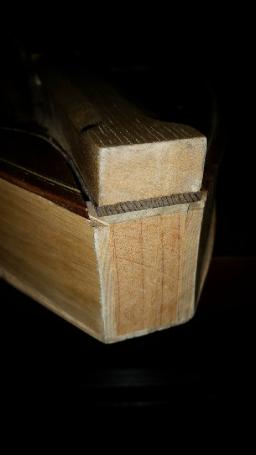Greetings! Was directed here from Chiff & Fipple, and am glad I found this forum!
So, I cam across this dulcimer recently and hope that perhaps a maker or knowledgeable player can help with some questions!
First, of course, if anyone can tell by looking who made it, I'd be grateful to learn that much!
As it is, its seems mostly finished. It's a three string instrument with nicely carved scroll, handmade tuning pegs, hollow & fretless fingerboard, transverse bars on the back (one in the upper bout, one in the lower), nicely carved and indented sound holes, inlaid purfling and a very curious cut-out design at the lower end of the instrument.
Obviously, it needs a nut and either one or two end plates where the end pins will be inserted.
The nut up at the scroll end is easy enough to sort out. But down at the lower end, the top of the instrument has been deliberately cut in such a way and has not been glued to the block in such a way that the fingerboard and instrument top can be (slightly) lifted and depressed.
My main questions are:
What is the purpose of this design?
Where should the hitch pins be attached? On the end of the fingerboard, or on the block that the body is attached to.
I'm wondering if this is some kind of "buzzing bridge" like arrangement that one finds on hurdy-gurdies.
There are no maker's marks or labels of any kind. It appears to be extremely well crafted and fitted together. I'd really like to get this working properly, and it's obviously more of a job than just nailing a couple old fiddle strings on there!
Thanks in advance for any help!
Picture 1 shows how the cut-out part of the top of the instrument is definitely not glued to the block.
Picture 2 shows a detail of the scroll and pegs, hopefully for identification!
Picture 3 shows a broad view of the cut-out in the lower bout.







